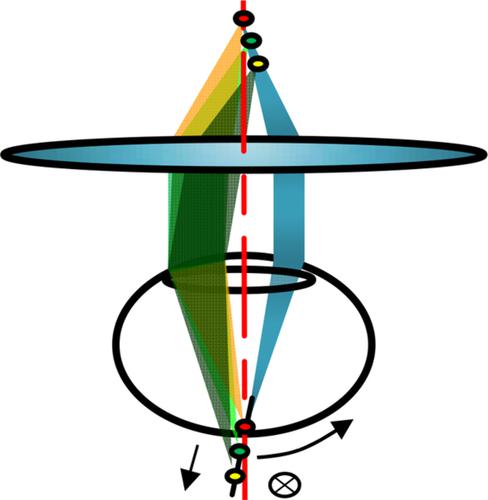当前位置:
X-MOL 学术
›
J. Biophotonics
›
论文详情
Our official English website, www.x-mol.net, welcomes your feedback! (Note: you will need to create a separate account there.)
Is oblique scanning laser ophthalmoscope applicable to human ocular optics? A feasibility study using an eye model for volumetric imaging.
Journal of Biophotonics ( IF 2.8 ) Pub Date : 2020-03-03 , DOI: 10.1002/jbio.201960174 Wenjun Shao 1 , Weiye Song 1 , Ji Yi 1, 2, 3
Journal of Biophotonics ( IF 2.8 ) Pub Date : 2020-03-03 , DOI: 10.1002/jbio.201960174 Wenjun Shao 1 , Weiye Song 1 , Ji Yi 1, 2, 3
Affiliation

|
Oblique scanning laser ophthalmoscopy (oSLO) is a novel imaging modality to provide volumetric retinal imaging without depth sectioning over a large field of view (FOV). It has been successfully demonstrated in vivo in rodent eyes for volumetric fluorescein angiography (vFA). However, engineering oSLO for human retinal imaging is challenging because of the low numerical aperture (NA) of human ocular optics. To overcome this challenge, we implement optical designs to (a) increase the angle of the intermediate image under Scheimpflug condition, and (b) expand the magnification in the depth dimension with cylindrical lens to enable sufficient sampling density. In addition, we adopt a scanning‐and‐descaning strategy, resulting in a compact oSLO system. We experimentally show that the current setup can achieve a FOV of ~3 × 6 × 0.8 mm3, and the transverse and axial resolutions of 7 and 41 μm, respectively. This feasibility study serves an important step for future in vivo human retinal imaging.
中文翻译:

斜扫描激光检眼镜是否适用于人眼光学?使用眼睛模型进行体积成像的可行性研究。
斜向扫描激光检眼镜(oSLO)是一种新颖的成像方式,可在不对大视野(FOV)进行深度剖分的情况下提供视网膜体积成像。它已在啮齿动物的眼睛中成功地在体内用于体积荧光素血管造影术(vFA)。但是,由于人眼光学器件的数值孔径(NA)低,因此工程化用于视网膜成像的oSLO具有挑战性。为了克服这一挑战,我们实施了光学设计,以(a)在Scheimpflug条件下增加中间图像的角度,并且(b)使用圆柱透镜扩大深度尺寸的放大倍率,以实现足够的采样密度。此外,我们采用了扫描和反扫描策略,从而形成了紧凑的oSLO系统。我们通过实验表明,当前设置可以实现约3×6×0.8 mm的FOV3,横向和轴向分辨率分别为7和41μm。这项可行性研究为将来的体内人体视网膜成像服务迈出了重要的一步。
更新日期:2020-03-03

中文翻译:

斜扫描激光检眼镜是否适用于人眼光学?使用眼睛模型进行体积成像的可行性研究。
斜向扫描激光检眼镜(oSLO)是一种新颖的成像方式,可在不对大视野(FOV)进行深度剖分的情况下提供视网膜体积成像。它已在啮齿动物的眼睛中成功地在体内用于体积荧光素血管造影术(vFA)。但是,由于人眼光学器件的数值孔径(NA)低,因此工程化用于视网膜成像的oSLO具有挑战性。为了克服这一挑战,我们实施了光学设计,以(a)在Scheimpflug条件下增加中间图像的角度,并且(b)使用圆柱透镜扩大深度尺寸的放大倍率,以实现足够的采样密度。此外,我们采用了扫描和反扫描策略,从而形成了紧凑的oSLO系统。我们通过实验表明,当前设置可以实现约3×6×0.8 mm的FOV3,横向和轴向分辨率分别为7和41μm。这项可行性研究为将来的体内人体视网膜成像服务迈出了重要的一步。




























 京公网安备 11010802027423号
京公网安备 11010802027423号